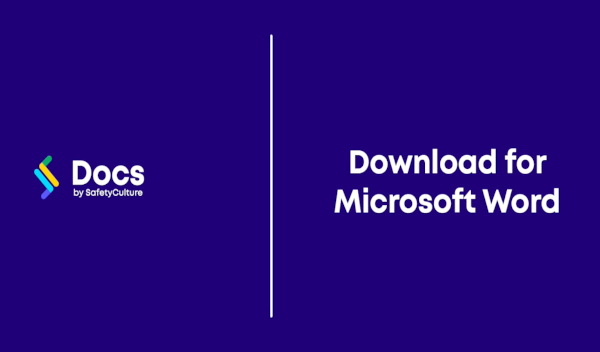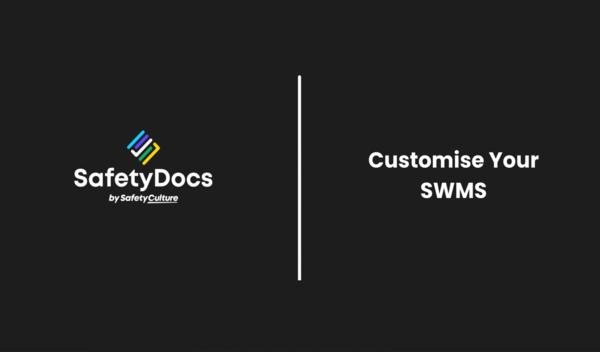Fire Alarm System Installation Safe Work Method Statement
- Instant Document Delivery via Email.
- Add to your existing management system.
- Can assist in ensuring workers are adequately trained.
- Customisation instructions provided.
- Microsoft Word Format (Fully editable).
- Only pay once (no subscriptions required).
Fire Alarm System Installation Safe Work Method Statement (SWMS)
This Fire Alarm System Installation Safe Work Method Statement (SWMS) provides guidelines for safely installing fire alarm systems. It addresses potential hazards and control measures for personal safety during installation activities.
Job Steps Covered in Fire Alarm System Installation SWMS:
- Training: Involves identifying potential hazards, determining needed resources, and planning the work sequence for safety.
- Arrival On-site: Involves assessing the site for safety, including vehicle positioning and site-specific inductions.
- Work Area Set-up: Establishes a secure work zone to prevent unauthorised access.
- Locate & Isolate Existing Services: Identifies and mitigates risks associated with existing utilities and services.
- Environment: Addresses environmental protection measures, including noise, waste, and chemical management.
- Housekeeping: Emphasises maintaining a tidy work area to prevent slips, trips, and falls.
- Manual Tasks: Outlines strategies to avoid musculoskeletal injuries from manual handling.
- Working with Powered & Non-powered Tools: Covers safe tool use, including electrical safety and fire prevention.
- Working at Height: Details precautions for tasks involving the risk of falls or dropping objects.
- Working in Ceiling Spaces & Utility Areas: Focuses on electrical safety and heat stress management in confined spaces.
- Running Cables & Installing Alarms: Guides on correct installation practices to avoid incorrect installation and electrocution risks.
- Mounting & Installing Components into Position: Electrical safety and protection from falling objects during component installation.
- Test & Commission: Outlines control measures for safely testing and commissioning installed equipment.
- Servicing/Maintenance/Testing: Details safety checks for maintaining and testing fire alarms.
- On Completion: Covers site clean-up and securing the area to prevent unauthorised access.
- Emergency Response: Prepares workers for efficiently handling emergencies and injuries.
Each purchase of our SWMS comes with a complimentary copy of the Legislation & Codes of Practice Reference List, valued at $19.95. This valuable resource provides an up-to-date overview of relevant laws and standards, further supporting your compliance efforts.
Key Features of the SWMS:
- Comprehensive Hazard Management: Identifies and provides control measures for a wide range of potential hazards.
- Regulatory Compliance: Aligns with Australian health and safety legislation.
- Detailed Control Measures: Offers specific strategies for risk mitigation, including environmental, electrical, and manual task safety.
- Emergency Response: Includes protocols for emergency response for readiness for unforeseen incidents.
Who is it Suitable For?
This SWMS is essential for professionals involved in the installation of fire alarm systems, including:
- Electrical contractors and electricians
- Fire safety technicians
- Construction project managers
- Occupational health and safety officers
Get the Fire Alarm System Installation SWMS today for comprehensive safety protocols and peace of mind during installations.
- Instant Document Delivery via Email.
- Add to your existing management system.
- Can assist in ensuring workers are adequately trained.
- Customisation instructions provided.
- Microsoft Word Format (Fully editable).
- Only pay once (no subscriptions required).
Fire Alarm System Installation Safe Work Method Statement (SWMS)
This Fire Alarm System Installation Safe Work Method Statement (SWMS) provides guidelines for safely installing fire alarm systems. It addresses potential hazards and control measures for personal safety during installation activities.
Job Steps Covered in Fire Alarm System Installation SWMS:
- Training: Involves identifying potential hazards, determining needed resources, and planning the work sequence for safety.
- Arrival On-site: Involves assessing the site for safety, including vehicle positioning and site-specific inductions.
- Work Area Set-up: Establishes a secure work zone to prevent unauthorised access.
- Locate & Isolate Existing Services: Identifies and mitigates risks associated with existing utilities and services.
- Environment: Addresses environmental protection measures, including noise, waste, and chemical management.
- Housekeeping: Emphasises maintaining a tidy work area to prevent slips, trips, and falls.
- Manual Tasks: Outlines strategies to avoid musculoskeletal injuries from manual handling.
- Working with Powered & Non-powered Tools: Covers safe tool use, including electrical safety and fire prevention.
- Working at Height: Details precautions for tasks involving the risk of falls or dropping objects.
- Working in Ceiling Spaces & Utility Areas: Focuses on electrical safety and heat stress management in confined spaces.
- Running Cables & Installing Alarms: Guides on correct installation practices to avoid incorrect installation and electrocution risks.
- Mounting & Installing Components into Position: Electrical safety and protection from falling objects during component installation.
- Test & Commission: Outlines control measures for safely testing and commissioning installed equipment.
- Servicing/Maintenance/Testing: Details safety checks for maintaining and testing fire alarms.
- On Completion: Covers site clean-up and securing the area to prevent unauthorised access.
- Emergency Response: Prepares workers for efficiently handling emergencies and injuries.
Each purchase of our SWMS comes with a complimentary copy of the Legislation & Codes of Practice Reference List, valued at $19.95. This valuable resource provides an up-to-date overview of relevant laws and standards, further supporting your compliance efforts.
Key Features of the SWMS:
- Comprehensive Hazard Management: Identifies and provides control measures for a wide range of potential hazards.
- Regulatory Compliance: Aligns with Australian health and safety legislation.
- Detailed Control Measures: Offers specific strategies for risk mitigation, including environmental, electrical, and manual task safety.
- Emergency Response: Includes protocols for emergency response for readiness for unforeseen incidents.
Who is it Suitable For?
This SWMS is essential for professionals involved in the installation of fire alarm systems, including:
- Electrical contractors and electricians
- Fire safety technicians
- Construction project managers
- Occupational health and safety officers
Get the Fire Alarm System Installation SWMS today for comprehensive safety protocols and peace of mind during installations.


